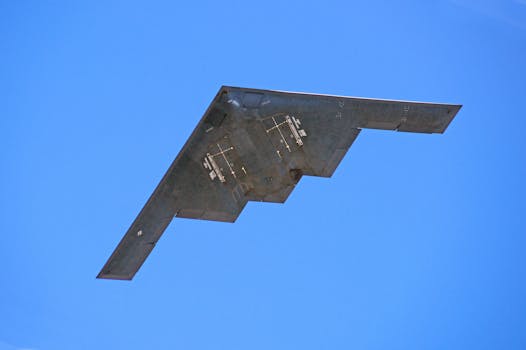
**
The US Air Force's much-anticipated acquisition of a new Airborne Early Warning and Control (AEW&C) system is gathering momentum, with Boeing's defense chief expressing strong optimism about the prospects for its E-7 Wedgetail offering. This comes as the service grapples with the urgent need to modernize its aging fleet and bolster its strategic capabilities in a rapidly evolving geopolitical landscape. The E-7 Wedgetail, a proven and battle-tested platform, is positioned to fill this critical gap, potentially marking a significant win for Boeing in the fiercely competitive defense market.
E-7 Wedgetail: A Proven Solution for the US Air Force's AEW&C Needs
The US Air Force's requirement for a new AEW&C system is well-documented. The current fleet, primarily consisting of the E-3 Sentry, is nearing the end of its service life, leaving a critical capability gap. This gap necessitates a swift and effective modernization strategy. The E-7 Wedgetail, already operational with several international partners including Australia, the UK, and the Royal Australian Air Force (RAAF), offers a compelling solution. Its mature technology, proven reliability, and extensive operational experience make it a strong contender.
Key Advantages of the E-7 Wedgetail:
- Advanced Multi-static Radar: The E-7 Wedgetail boasts a cutting-edge, multi-static radar system providing superior situational awareness and target detection capabilities compared to legacy systems. This translates to enhanced surveillance, improved track accuracy, and a broader operational envelope.
- Robust Communication Suite: The platform is equipped with a sophisticated communication suite facilitating seamless information sharing and coordination with ground forces and other airborne assets. This interoperability is crucial in modern, networked warfare environments.
- Proven Operational History: The RAAF's extensive use of the E-7 Wedgetail in various operational scenarios provides concrete evidence of its effectiveness. Data from these real-world deployments validates the system's performance, reliability, and operational suitability.
- Cost-Effectiveness: While the initial investment is significant, the E-7 Wedgetail’s proven reliability and reduced lifecycle maintenance costs offer long-term financial advantages over other proposed solutions. This factor is crucial in today's constrained defense budgets.
- Rapid Deployment Capability: The aircraft's design allows for quicker deployment and integration into existing operational structures. This streamlined approach minimizes disruption and maximizes operational readiness.
Boeing's Confidence and the Path Ahead
Boeing's confidence in securing the US Air Force contract is underpinned by the E-7 Wedgetail's demonstrable capabilities and its alignment with the service's requirements. The company's defense chief has highlighted the platform's readiness for immediate deployment, underlining its potential to swiftly address the emerging AEW&C gap.
Addressing Concerns and Competition:
The competition for the US Air Force AEW&C contract is expected to be intense. While the E-7 Wedgetail presents a compelling case, Boeing will need to address potential concerns regarding the scale of the acquisition, integration challenges, and any perceived limitations compared to potentially competing platforms. The company’s approach will likely involve a robust demonstration of the E-7 Wedgetail’s capabilities tailored specifically to the US Air Force's operational needs. This may include tailored simulations and flight demonstrations highlighting the platform's compatibility with existing US Air Force systems and infrastructure.
Furthermore, the geopolitical context will also play a significant role. The ongoing tensions with major global powers have highlighted the criticality of advanced AEW&C capabilities in maintaining strategic advantage. This heightened awareness could work in Boeing's favor, especially given the Wedgetail's proven track record with allies in similar strategic environments.
The Future of Airborne Early Warning & Control: A Technological Leap Forward
The US Air Force's acquisition of a new AEW&C system represents a major investment in modernizing its capabilities. The selection process will be rigorous, requiring a thorough evaluation of competing platforms based on factors including cost, performance, and operational suitability. The outcome of this process will significantly impact the US Air Force's ability to maintain its strategic advantage in the years to come.
The success of the E-7 Wedgetail in securing this contract would not only represent a significant win for Boeing but also mark a substantial technological leap forward for the US Air Force's AEW&C capabilities. The platform's advanced sensor technology, robust communication systems, and proven operational reliability position it to meet the challenges of a complex and ever-evolving global security landscape. The decision will be a closely watched event within the defense industry, with significant implications for global aerospace and defense markets. The stakes are high, and the world will be watching to see which platform will ultimately take to the skies in defense of US interests. This acquisition is a crucial element of the US Air Force's broader modernization strategy and a crucial piece of the puzzle in maintaining air superiority. The ongoing dialogue and eventual outcome will continue to be closely monitored by industry experts and government officials alike. The acquisition represents a critical modernization effort and a significant investment in ensuring future readiness.




















